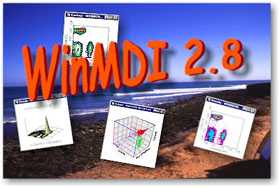Winmdi 29 Free Download Software
If you have any issue with flashing then you can download this awesome and updated flashing tool and then solve your this series issue. The given downloading link solve your all type of flashing problems. Mxkey 35 rev 27 download for windows. Mxkey Hti box is the world best and fast flashing tool which allows you to flash your all kinds of phones. The available link is its official and free downloading link which allows you to flash your phone and enjoy lot of new features.
This article has been and can now be. Public peer review comments can be seen Kieran O'Neill 1,2,†, Nima Aghaeepour 1,2,†, Josef Špidlen 1, Ryan Brinkman 1,4* 1Terry Fox Laboratory, BC Cancer Agency, Vancouver, BC, Canada 2Bioinformatics Graduate Program, University of British Columbia, Vancouver, BC, Canada 3Department of Medical Genetics, University of British Columbia, British Columbia, Canada † Co-lead authors. * Corresponding author, email: rbrinkman@bccrc.ca is the application of to data, which involves storing, retrieving, organizing and analyzing flow cytometry data using extensive computational resources and tools.
WinMDI is the best free software for the analysis of flow cytometry data. I use the program since 4 years and until now it provided almost all functions I needed.
Flow cytometry bioinformatics requires extensive use of and contributes to the development of techniques from. Flow cytometry and related methods allow the quantification of multiple independent on large numbers of single. The rapid growth in the multidimensionality and throughput of flow cytometry data, particularly in the 2000s, has led to the creation of a variety of computational analysis methods, data standards, and public databases for the sharing of results. Computational methods exist to assist in the preprocessing of flow cytometry data, identifying cell populations within it, matching those cell populations across samples, and performing diagnosis and discovery using the results of previous steps. For preprocessing, this includes compensating for spectral overlap, data onto scales conducive to visualization and analysis, assessing data for quality, and data across samples and experiments.
For population identification, tools are available to aid traditional manual identification of populations in two-dimensional (gating), to use to aid gating, and to find populations automatically in higher dimensional space in a variety of ways. It is also possible to characterize data in more comprehensive ways, such as the density-guided technique known as probability binning, or by combinatorial gating. Finally, diagnosis using flow cytometry data can be aided by techniques, and discovery of new cell types of biological importance by high-throughput statistical methods, as part of pipelines incorporating all of the aforementioned methods., and are also key parts of flow cytometry bioinformatics. Data standards include the widely adopted Flow Cytometry Standard (FCS) defining how data from cytometers should be stored, but also several new standards under development by the International Society for Advancement of Cytometry (ISAC) to aid in storing more detailed information about experimental design and analytical steps. Open data is slowly growing with the opening of the CytoBank database in 2010, and FlowRepository in 2012, both of which allow users to freely distribute their data, and the latter of which has been recommended as the preferred repository for MIFlowCyt-compliant data by ISAC. Open software is most widely available in the form of a suite of packages, but is also available for web execution on the platform.
Schematic diagram of a flow cytometer, showing focusing of the fluid sheath, laser, optics (in simplified form, omitting focusing), photomultiplier tubes (PMTs), analogue-to-digital converter, and analysis workstation. Flow cytometers operate by suspended cells so that they separate from each other within a fluid stream. The stream is passed by one or more lasers, and the resulting and light is detected. By using, particular on or within the cells can be quantified by peaks in their. These may be such as or, or they may be artificial fluorophores to detection molecules such as for detecting, or for detecting.

The ability to quantify these has led to flow cytometry being used in a wide range of applications, including but not limited to: • Monitoring of count in • Diagnosis of various • Analysis of aquatic • • Measuring length Until the early 2000s, flow cytometry could only measure a few fluorescent markers at a time. Through the late 1990s into the mid-2000s, however, rapid development of new fluorophores resulted in modern instruments capable of quantifying up to 18 markers per cell. More recently, the new technology of mass cytometry replaces fluorophores with detected by, achieving the ability to measure the expression of 34 or more markers.
At the same time, methods are providing a flow cytometry-like method of quantifying 48 or more RNA molecules per cell. The rapid increase in the dimensionality of flow cytometry data, coupled with the development of high-throughput robotic platforms capable of assaying hundreds to thousands of samples automatically have created a need for improved computational analysis methods. Steps in computational flow cytometry data analysis. An example pipeline for analysis of FCM data and some of the Bioconductor packages relevant to each step. The process of moving from primary FCM data to disease diagnosis and biomarker discovery involves four major steps: • Data pre-processing (including compensation, transformation and normalization) • Cell population identification (a.k.a. Gating) • Cell population matching for cross sample comparison • Relating cell populations to external variables (diagnosis and discovery) Saving of the steps taken in a particular flow cytometry is supported by some flow cytometry software, and is important for the reproducibility of flow cytometry experiments.